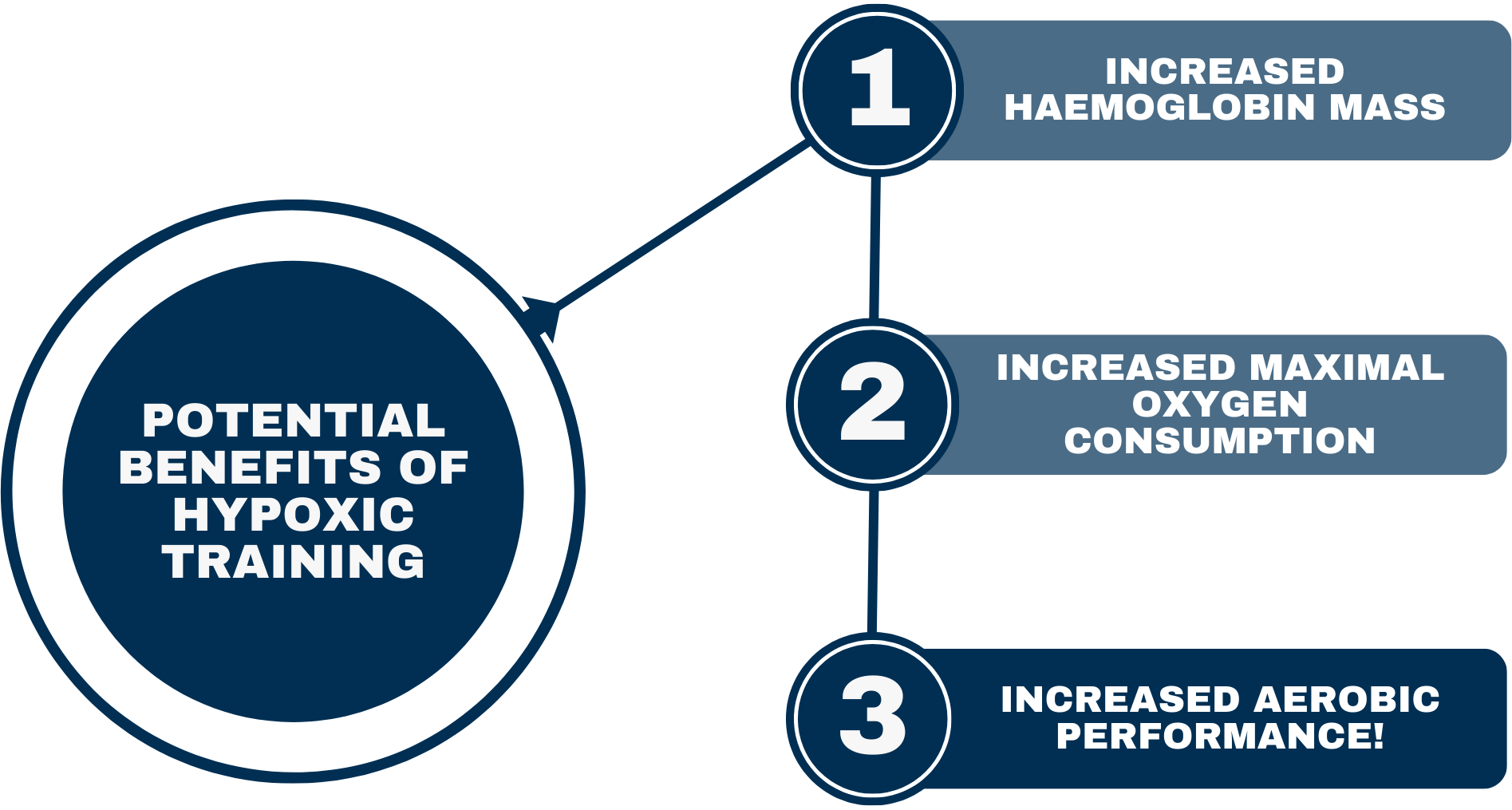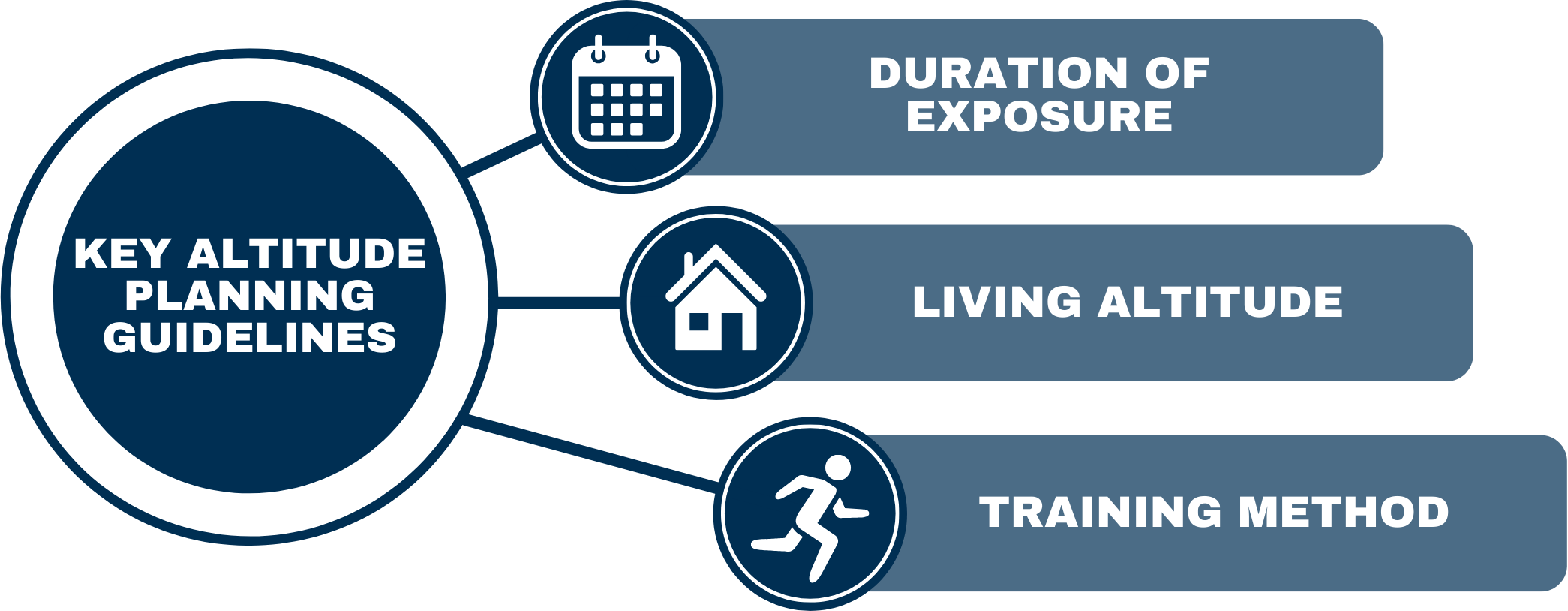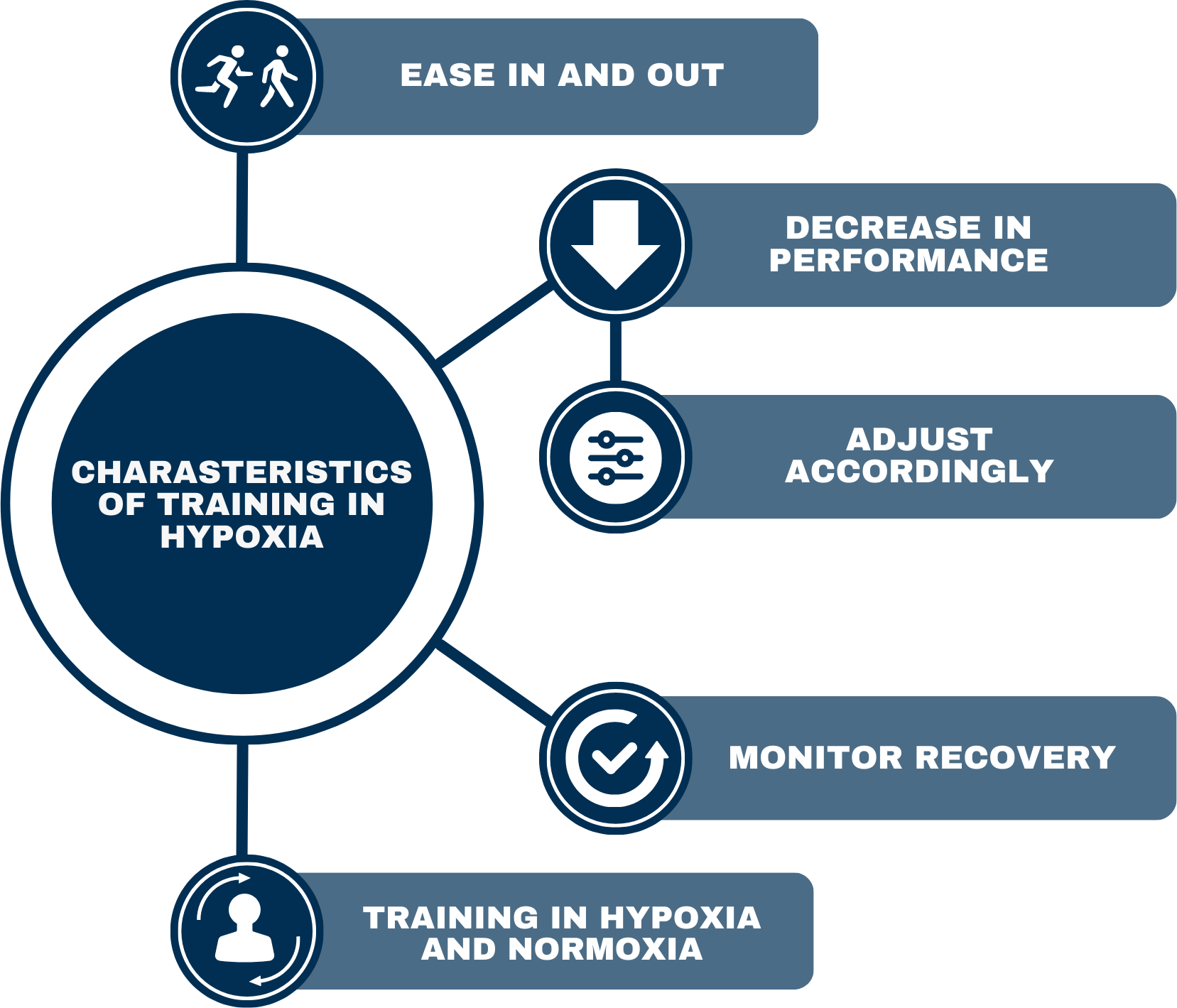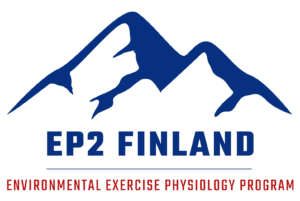Hypoxia refers to the decreased partial pressure of oxygen in the surrounding air when compared to sea level conditions (normoxia). Hypoxia occurs naturally at altitudes above sea level (hypobaric hypoxia) but can also be simulated at sea level using hypoxic chambers and tents (normobaric hypoxia). Exposure to hypoxia initiates acclimation mechanisms to maintain blood and tissue oxygenation. The magnitude of these responses depends on the prescribed severity and duration of hypoxia, as well as on individual characteristics. Although hypoxia influences many physiological systems, it is the rise in haemoglobin mass that is considered to be the most important factor driving the chronic increase in tissue oxygenation and maximal oxygen consumption. As such, hypoxia has the potential to increase aerobic performance, hence its popularity among elite endurance athletes.3

Plan, Execute, and Monitor
A well-executed hypoxic training period has the potential to increase physical performance compared to training done solely at sea level. Conversely, with poor planning and execution prolonged hypoxic exposure can ruin months of preparation and training. The chances of success can be increased with careful planning, execution, and monitoring.1
It is necessary to have an adequate plan for the hypoxic training period ahead. Plan the duration, living altitude, and training method of the period as these all can affect the physiological response and practical arrangements. The plan should take into consideration the athlete’s individual characteristics and previous response, sport, training season, and competition altitude when preparing for a competition held at high altitude.
Monitoring should begin well in advance to establish reference values. Performance tests and blood tests (blood profile, reticulocytes, ferritin, CRP, and hemoglobin mass if available) are necessary to evaluate the readiness for and the success of the hypoxic training period. If the athlete is ill, over-trained, or has low plasma ferritin, high altitude training is ill-advised. Monitoring should continue after returning to sea level training as there is considerable individual variability not only in acclimation to hypoxia but in acclimation back to normoxia. Precise monitoring provides an opportunity to learn about the athlete’s individual response.1

LHTL — Living High, Training Low — living at high altitude, training at low altitude.
LHTHL — Living High, Training High and Low — living at high altitude, training at high and low altitudes.
LLTH — Living Low, Training High — living at low altitude but some training is done at high altitude (e.g. Intermittent Hypoxic Exposure, IHE and Intermittent Hypoxic Training, IHT). This method can be used to potentially prolong the effects of previous high altitude training.
Training in Hypoxia
Although hypoxic exposure itself can induce physiological adaptations, the full potential of hypoxia is gained by both training and living in hypoxia. However, there are some key differences that must be considered during training in hypoxia and return to sea level.
During hypoxic exposure
Training should be light at the beginning of exposure to ensure proper acclimation. Hypoxia presents an additional stressor for the body and increases the likelihood of illness and overtraining if training is not adjusted.2 As acute hypoxia decreases maximal aerobic performance, training done at a standard pace or power corresponds to a higher percentage of maximal performance. Although physical performance at high altitude will increase as the athlete acclimates, sea level performance is not reached even in highly acclimated athletes. If hypoxic training is used to enhance performance at sea level, high intensity training should be done at a lower altitude where a higher pace or power output can be held2. Furthermore, occasionally training at a lower altitude can accelerate the acclimation back to normoxia upon return to sea level training. Keeping training light again at the end of exposure can increase the chance of transfer of positive physiological adaptations.
Return to sea level conditions
The acclimation to normoxia has similar individual variability as the acclimation to hypoxia but most athletes find that the first few days upon return to sea level physical performance is increased. This is followed by a period of variable performance until the variability in decreases and performance sets to a higher level approximately 15 days after the return to normoxia.1 “Training High and Low” has the potential to accelerate the process and performance can be normalized within the first week of return to normoxia. This new level of higher performance can be maintained for a few weeks, until adaptations from hypoxia are lost.
As acclimation to normoxia and a decrease in hemoglobin mass begins as hypoxic exposure is ceased, ways to prolong the benefits of hypoxia have been researched. Our preliminary findings suggests that the novel IHE+IHT-method (intermittent hypoxic exposure and intermittent hypoxic training) has the potential to prolong the period of high physical performance after hypoxic exposure, and in some cases, it can even enhance the benefits of hypoxia. It is important to note though, that the periodization of training has a large impact on the performance outcomes of altitude training.

Hypoxic training can have clear benefits to endurance performance, but careful planning and monitoring is required. Repeated use can increase beneficial adaptations. EP2 FINLAND brings the aid and assistance of field experts to your disposal. Utilizing these resources in the planning and execution of high altitude training can increase your chance of success. Preparing to compete at altitude is discussed elsewhere.

References:
1. Mujika, I., Sharma, A.P. & Stellingwerff, T. (2019). Contemporary Periodization of Altitude Training for Elite Endurance Athletes: A Narrative Review. Sports Medicine 49, 1651–1669. https://doi.org/10.1007/s40279-019-01165-y
2. Girard, O., Levine, B. D., Chapman, R. F., and Wilber, R. (2023). “Living High-Training Low” for Olympic Medal Performance: What Have We Learned 25 Years After Implementation?. International Journal of Sports Physiology and Performance 18, 6, 563-572. https://doi.org/10.1123/ijspp.2022-0501
3. Treff G, Sareban M, Schmidt WFJ. (2022). Hypoxic training in natural and artificial altitude. German Journal of Sports Medicine, 73: 112-117. doi:10.5960/dzsm.2022.529
4. Otto, J., Montgomery, H. & Richards, T. (2013). Haemoglobin concentration and mass as determinants of exercise performance and of surgical outcome. Extreme Physiology & Medicine, 2 (1), 33. https://doi.org/10.1186/2046-7648-2-33
Authors: Jere Borgenström, MSc;
Christina Kuorelahti, PhD;
Dominique Gagnon, PhD, Adjunct Professor;
Juha Peltonen, PhD, Adjunct Professor
